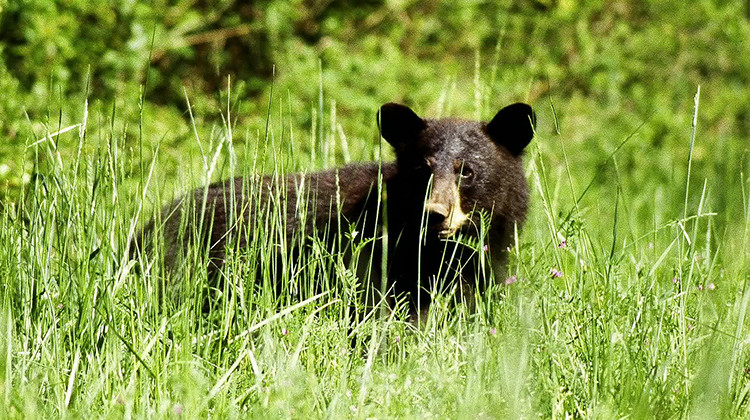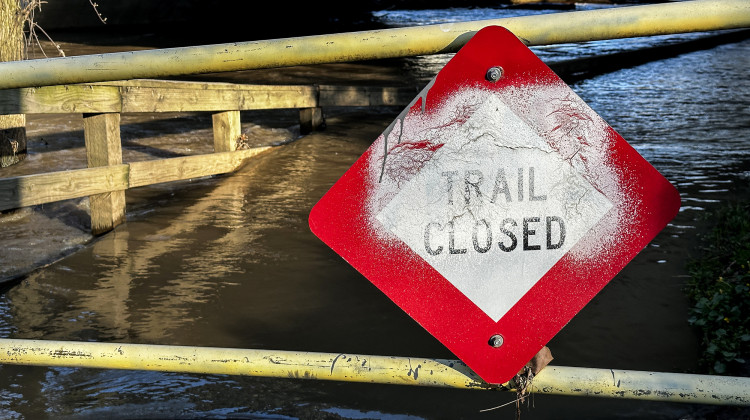
Black bears, like this one pictured in the Great Dismal Swamp National Wildlife Refuge in Suffolk, Virginia, are rarely seen in Indiana.
United States Fish and Wildlife ServiceUTICA, Ind. (AP) — A black bear that's been spotted in northern Kentucky may venture into Indiana by taking a swim across the Ohio River, state wildlife officials say.
The Kentucky Department of Fish & Wildlife has confirmed that the bear has been spotted north of Prospect, Kentucky. That's just south of Clark County, Indiana, along the Ohio River and because bears are strong swimmers officials said it may cross the river into Indiana, the News and Tribune reported.
The bear's sighting isn't a cause for alarm but a time for residents to prepare to avoid negative interactions with the animal if it does cross into Indiana, said Brad Westrich, a nongame mammalogist with the Indiana Department of Natural Resources.
“This sighting provides an opportunity for Hoosiers in the area to secure outdoor grills, trashcans, or pet and bird food," he said. “Black bears prefer to avoid humans, and removing potential food sources goes a long way to prevent negative interactions.”
Black bears are rarely seen in Indiana. In 2015, a black bear entered the state from Michigan, becoming the first black bear confirmed in Indiana since the 1870s, DNR said.
Since 2015, the state agency has confirmed three black bears in the Hoosier state.
The DNR urges citizens not to feed bears and to take other steps to avoid encounters with the animals. An online guide called BearWise lists what people can do to minimize the chances of such run-ins.
Indiana residents who spot a bear in the state are encouraged to report those sightings using the DNR’s large mammal report form or by calling DNR Law Enforcement at 812-837-9536.
 DONATE
DONATE








 View More Programs
View More Programs

 Support WFYI. We can't do it without you.
Support WFYI. We can't do it without you.